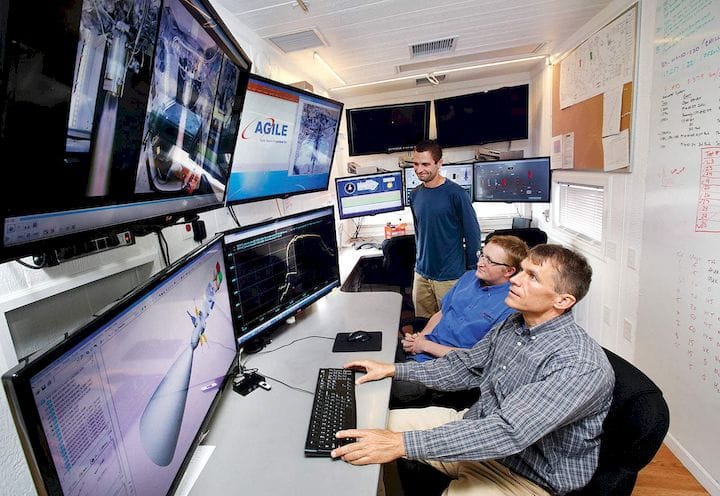![Designing 3D printed rocket thrusters at Advanced Mobile Propulsion Test [Source: Durango Herald]](https://fabbaloo.com/wp-content/uploads/2020/05/image-asset_img_5eb0a48d95908.jpg)
I’m reading a piece in the Durango Herald discussing a rocketry startup that’s using 3D printing.
The company, Advanced Mobile Propulsion Test, has been working on the development of rocket thrusters since their founding in 2009 by Daudi Barnes. Barnes has correctly caught on to the notion that aerospace parts are best produced with 3D printing technologies.
Thrusters are small rockets that spacecraft use for maneuvering, rather than the much more powerful main rocket engines that might raise the vehicle into orbit.
The reasons are clear: 3D printing allows parts to be produced with unusual geometries not achievable with conventional manufacturing processes. This means that aerospace parts can be made in one complex piece, rather than as an assembly of multiple conventionally produced simpler geometry parts.
Part weight can be lowered considerably by single piece approaches, as you lose any lugs and bolts required with previous methods. It also makes the parts more reliable as there are no seams or joints to fail.
Finally, aerospace parts can be designed with complex lattice structures that offer the same required engineering performance as solid pieces, but with far less material. This also lowers the weight of the parts.
And lower weight is the game in aerospace: any gram lost means more cargo to transport, a corresponding decrease in engine capacity, or an increase in engine duration. It’s simply financial arithmetic.
Many aerospace companies have caught on to this idea, embracing it fully. GE in particular has done so, even going so far as to purchase not one, but two 3D printer manufacturers and designing their own 3D metal printers.
Back at Advanced Mobile Propulsion Test, and Barnes’ new company Agile Space Propulsion, the Durango Herald says:
“Barnes said he does not know of any other company using 3D printing to make thrusters, but he suspects some are doing it because the benefits are obvious. Larger companies, he said, are using 3D printing to make the larger booster engines that put a rocket in space.”
This takes me back to a presentation years ago where a speaker was introducing 3D printing to a crowd of local manufacturers, and asked, “which companies here use 3D printing?” No one put up their hand – even though I knew full well that several were in fact deep into 3D printing. Why did they not raise their hands and admit use of the technology? Because they felt it better to keep it secret that they were using a technology that provided them a competitive advantage.
I think that’s the case here, too.
Agile Space Propulsion is using 3D printing because it’s the obvious and sensible approach to making their products.
It’s the Normal Thing to do.
That is something I could not have written about 3D printing only a few years ago.
Via Durango Herald











Eric Haddad is the founder and Pilot in Command of 3DAeroventures, a Texas-based outfit specializing in 3D printed RC aircraft.